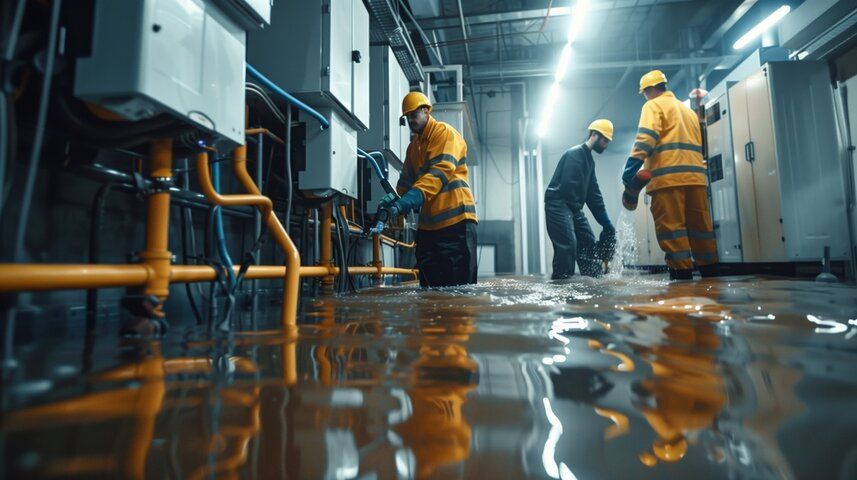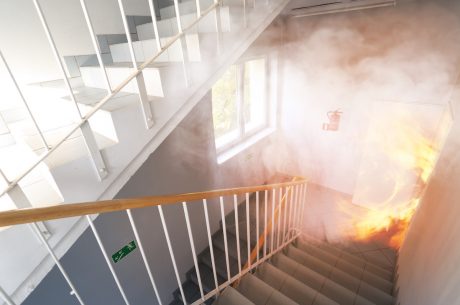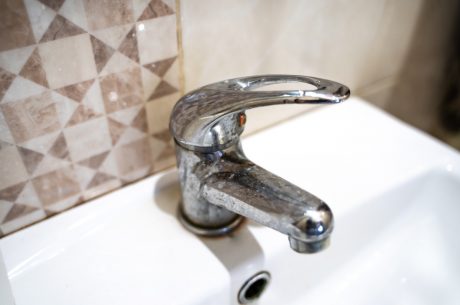In this article:
When the skies darken and the first drops of heavy rain begin to fall, the potential for flash floods becomes all too real. This natural disaster can be a double-edged sword for businesses, cutting off revenue streams while demanding rapid and comprehensive response.
Preparedness is the best defense. In this blog, we’ll walk through the meticulous steps required to ready your business for the potential devastation flash floods can bring. This guide isn’t just about keeping your bottom line afloat; it’s about saving lives, and ensuring your community’s resilience in the face of nature’s unpredictable fury.
Assessing Your Flash Flood Damage Risk
Before the first storm cloud appears on the horizon, it’s crucial to understand your business’s flood vulnerability.
- Prioritize critical risks. Identify areas of your business that are most susceptible to a flash flood. This could include basement storage or any components essential to your daily operations near ground level. Consider elevating pertinent utilities like electrical panels, appliances, heating systems, and critical wiring.
- Develop an evacuation plan. Create detailed safety routes, marking both primary and secondary evacuation paths. Regularly stage drills to ensure employees can confidently vacate the premises in a time-sensitive emergency. Have a chain of command to carry out the action plan. Be sure to have safety procedures for customers and visitors, too.
- Inventory your assets. Maintain an updated list of all equipment and inventory. Knowing what you stand to lose helps inform insurance coverage and replacement prioritization in the event of flood damage. Enrolling in flood insurance is a smart idea, especially if you are located in a flood zone.
- Connect with local authorities. Build rapport with your local emergency flood risk management team. Their insight can be invaluable and may even yield additional preparedness resources. The Federal Emergency Management Agency (FEMA) is a great resource that regularly updates maps to show which areas are at a higher risk of flooding. FEMA can also help you choose the right flood insurance program.

Establishing Safety Protocols
Your priority is human life. A flash flood can escalate within minutes, and knowledge is your strongest ally. Here’s how you can ensure everyone remains safe during a crisis:
- Employee training. Host workshops and training sessions focused on flash flood safety. Stress the importance of early evacuation, and help staff recognize water-related hazards. Educate employees about the dangers of downed power lines, and what dictates when it’s unsafe to come into work. Cover all potential danger areas, driving routes, and low points when giving employees proper flood safety training.
- Chain of command. Institute a clear command structure for emergencies. Each employee should know their role, who to report to, and when to enact the emergency response plan for flash flooding.
- Implement early warning systems. Technology can provide crucial minutes of additional response time. Install flood monitoring equipment and subscribe to local alert systems, like FEMA.

Operational Preparedness
According to a report by FEMA, nearly 40% of small businesses fail to reopen their doors after a flood disaster. Minor water damage can cause your business to lose thousands of dollars. With human safety secured, it’s time to focus on safeguarding business continuity. There are three things you can do to ensure your operations suffer no glitches:
- Back up critical data. Ensure you have redundant digital copies of all important business information. Utilize cloud storage, and off-site servers to protect against data loss.
- Structuring insurance coverage. Consult with an insurance agent to verify your policy’s flood coverage. Understand what is and isn’t protected, and consider supplementary coverage for potential gaps. If your insurance doesn’t cover water damage caused by a flood, consider enrolling in the National Flood Insurance Program (NFIP).
- Emergency supplies. Have sufficient supplies, such as food, water, first aid, and lighting, on hand for immediate use and longer-term support in case of a business encampment.
Physical Business Preparedness
Flood waters and heavy rain can damage building materials if the proper precautions aren’t taken. Flood-proofing your premises calls for a meticulous approach to maintenance and infrastructure, so be sure to:
- Conduct equipment checks. Every quarter, check the condition of sump pumps, generators, and other flood protection equipment. Ensure all systems are operational with reliable backup capabilities.
- Waterproof physical barriers. Invest in sturdy flood barriers for doors and windows. Ensure they are fitted correctly and are easily deployable by staff members.
- Elevate inventory. Store inventory and equipment on higher shelves or upper-level storage areas whenever possible. Instruct the staff to place protective coverings over computers and hardware if necessary.

The Aftermath of Water Damage
Post-flood can be traumatic, daunting, and even a bit disheartening. Though it’s easy to panic, it’s important to remain calm, and take the necessary steps to restore water-damaged property and get your business back on track.
- Physical inspection. Do not re-enter the building until local authorities declare it safe. When cleared, conduct a thorough assessment of structural and property damage. Look for gas leaks, burst pipes, or sharp objects. Call a water damage restoration expert to assess the extent of the water damage.
- Documenting losses. Compile a list of flood losses, including damages and lost inventory. Provide this, and any necessary forms, to your flood insurance company as soon as possible. Take pictures to document the further damage as well.
- Community ties. Stand in solidarity with your community. Coordinate with local businesses and authorities to pool resources for a faster, more unified recovery. Look into community programs that help finance rebuilds. Be attentive to any updates regarding contaminated water or water supply issues. Your city may suggest boiling water if sewage has contaminated it.
- The road to rebuilding. Create a step-by-step plan for water damage restoration. This includes securing replacement equipment, deploying data backups, and addressing any structural damage to the property. Water damage restoration experts, such as PuroClean, can help remove excess standing water and damaged material from the premises. It’s pertinent to call a water damage restoration company as soon as possible to restore salvageable materials to their pre-damaged condition. The longer you wait after water damage, the higher the risk of losses.

A Smart Flood Preparation Plan Makes a Smart Business
Flood preparation is not just about assets; it’s about the people who make your business what it is. Proactive planning and clear communication are your most potent tools in an impending emergency. Remember, it’s not enough to prepare for a flood; you must be ready to act decisively when waters rise and remain calm during the aftermath. Water damage restoration is possible, even after the most torrential storms.
Does Your Business Have Structural Damage From Flooding? Call PuroClean Today!
If you’re facing water damage after a flood, look no further than PuroClean. We are proud to exceed business owners’ water damage restoration needs with quality and efficiency. Our professional team is skilled in handling the unique challenges associated with floods and ensuring that water damage doesn’t cause further structural damage. Our experts are available 24 hours a day, seven days a week. To get in touch with us, please call today at (800) 775-7876 or visit our website to find your nearest office.




